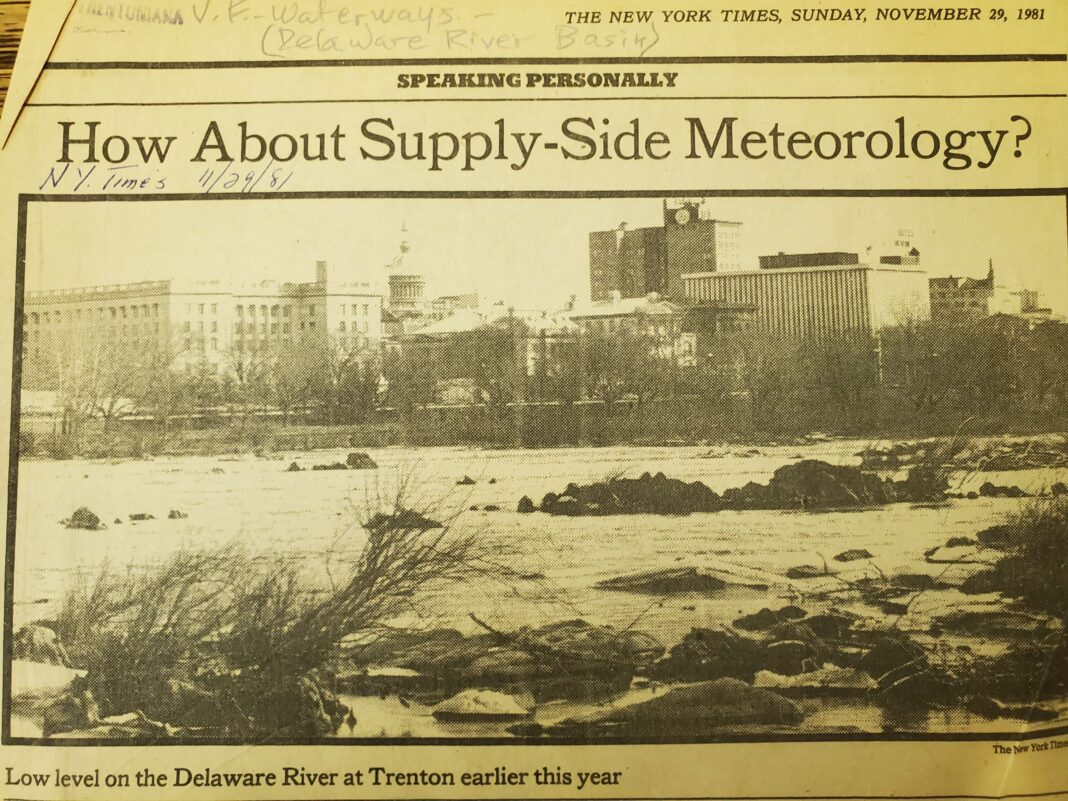Trenton has a developing relationship with the Delaware River, the claim to fame with George Washington being one of the many notes in the river long history with the city. For Historic Trenton’s Day in the Life, we’re looking back through newspapers from the beginning and examining everyday problems, solutions, and needs during historic Trenton’s past. Today, we look at the history of the Port of Trenton.
Just before the Civil War, Trenton was declared Port of Trenton, District of Burlington. The problem facing Trenton was the lack of a deep enough channel that would allow boats to go upriver from Philadelphia safely.
There were many attempts to try and deepen the river to create a port for Trenton.
In 1809, the New Jersey Legislature passed a bill authorizing the building of a lock in the Delaware River to improve the navigation of ships. It approved Daniel W. Coxe, Samuel Wright, Jr., and Peter T. Smith to build a wing dam in the river opposite Market Street.
According to the History of Trenton, 1679-1929, they were “to have a lock in the same, where it crossed that part of the river on the east side of Yard’s Island, of such size and dimensions that Durham boats of the largest size and other craft may pass up and through the same with ease and safety.”
However, the project would never be started. In 1910, the federal government adopted the project to build a canal from Alleghany Avenue, Philadelphia, to Lalor Street, Trenton, and for the construction of dikes at Biles Island, Bordentown, and Mud Island.
The project for deepening the channel started above Lalor Street as far as the railroad bridge. According to The History of Trenton 1679-1929, the plan called for a 12-foot channel, 200 feet wide, and a turning basin at the site of the municipal pier, 300 feet wide and 400 feet long.
In the River and Harbor Act of June 5, 1920, Congress combined this project and the one of 1910 into a single project. By 1928, vessels could navigate inland from Trenton to Beaufort, N.C.
As industry boomed in Trenton, it became a place for ships to stop and dock as they traveled up and down Delaware. The Sunday Times published a piece in 1930 saying that the house bill appropriation of 4,250,00 for the improvement of the Delaware River Channel was passed to build and improve on the Delaware.
“Not only will the industrial area in the northeast Philadelphia profit by the channel… a dozen towns between Philadelphia and Trenton will benefit,” wrote the Sunday Times.
For a while, they did. According to the New York Times, in 1932, a crowd of estimated 30,000 people crowded the shores of the Delaware River as the ship known as the Bristol City marked the opening of Trenton as a seaport. This was the culmination of a 20-year campaign by Mayor Frederick W. Donnelly.
By 1950, the maritime Delaware accommodated over 8,000 ships in Philadelphia. However, these ships would most likely not reach the port of Trenton, which was short-lived as industries left Trenton after the second World War. The Port of Trenton dwindled and was transformed into recreational areas.





